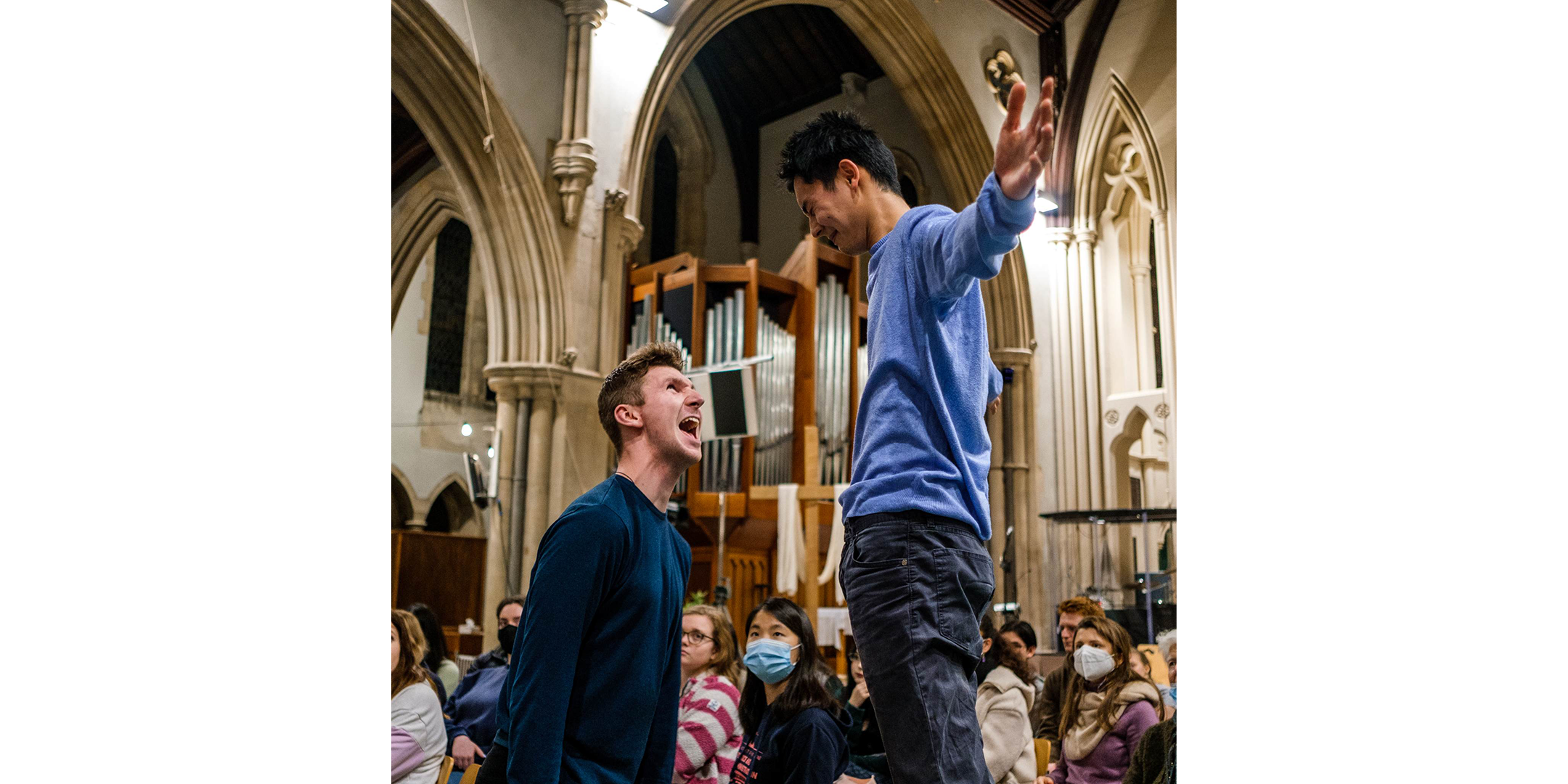On Monday 7 February, Bristol University CU hosted The Mark Drama, a dramatised version of Mark’s Gospel. The performance was covered by Epigram, the University of Bristol’s Independent Newspaper. This piece first appeared there and has been republished in Impact and now on our blog with permission from the author, Flossie Palmer.
Credit must firstly be given to the efforts of the Bristol CU to translate Mark’s Gospel into a much more accessible format. Actors wore their own clothing – mainly jeans and t-shirts – instead of costume, and spoke in simple, conversational language. Elements of comedy were also integrated into the performance, especially when the 12 disciples were first trying to understand the motives and unexplained skills of Jesus, played by Andi Wang.
Laughter erupted from the crowds when the disciples interacted with the crowd, asking if they would ‘like any crumbs’ after being told to hand out the very limited food provided by Jesus. In fact, the disciples were the most active in adding comedic value to the performance, with Peter, John, James and Andrew especially becoming recognisable faces from whom we could expect a witty quip or too to break the seriousness of Jesus’ parables.

Interactive elements were a key feature of making The Mark Drama more accessible, and ultimately more humorous. This was effectively integrated by arranging the audience seating in a circular formation, and the performance taking place in the centre for most of the 90-minute segment. Through this, the audience became an actor too, reacting to the events taking place less than a metre in front of them as if they were a part of the performance. In this way, the audience became a collective body and were able to interact with the actors, which ultimately helped include non-religious audience members in the viewing experience no matter their amount of knowledge or understanding of the Gospel before the performance.
Although the circular seating arrangement allowed for the performance to take centre stage (quite literally), the actors were not confined by this formation. In fact, Jesus led his followers through the audience rows, taking them on a physical journey so the audience weren’t left relying on their imagination. The Pharisees, played by Sophie Banks and Justin Yeung, who remained suspicious of Jesus’ motives throughout, were cleverly positioned on the outside of the circle, indicating their efforts to distance themselves from Jesus and his followers, who were positioned within the inner circle for most of the performance.

Bristol CU also made valuable use of the venue, Clifton Christ Church, throughout the performance. The absence of music certainly didn’t leave the performance lacking, as the crew played on the cavernous high ceilings of the Church to project their voices. Each echo became a powerful, haunting voice reverberating around the circular audience formation, and each yell or exclamation deafened the ears of the audience. Overall, the performance replaced the traditional need for costume and props with physical theatre and manipulated the venue to heighten the senses of its audience, bringing them once again much closer to the action.
While most of the performance took place beneath bright lights, Jesus’ suffering once left alone, crucified on the cross, plunged the audience into complete darkness. The audience was subjected to shadows and felt the weight of Jesus’ pain, expertly conveyed by the cries and wails of Andi Wang, which echoed about the otherwise silent church. Here, the audience were cast into a moment of emotional reflection, in which even I, as a non-religious member of the audience, felt the significance.
Throughout, the performance succeeded in its mission to make approaching The Mark Gospel more accessible for non-religious members. The inclusion of humour and use of modern language demystified the message of the Gospel into simplistic terms, and the comedic value brought by the disciples made them likeable and relatable characters for non-religious audience members.

Although the stripped back performance allowed the modern adaptation to maintain its religious message with clarity, it may have been beneficial for more stylistic choices to be made regarding costume and character-dependent props. This clearer signposting of different characters would have provided further guidance for non-religious audience members who struggled to distinguish them based on purely their names, although this was in no way essential for the overall comprehension of the play.
You can read the article as it first appeared on the Epigram website here: https://epigram.org.uk/2022/02/09/review-bristol-cus-the-mark-drama